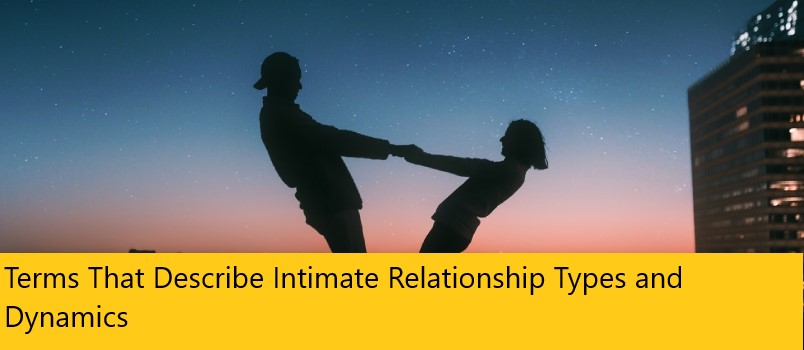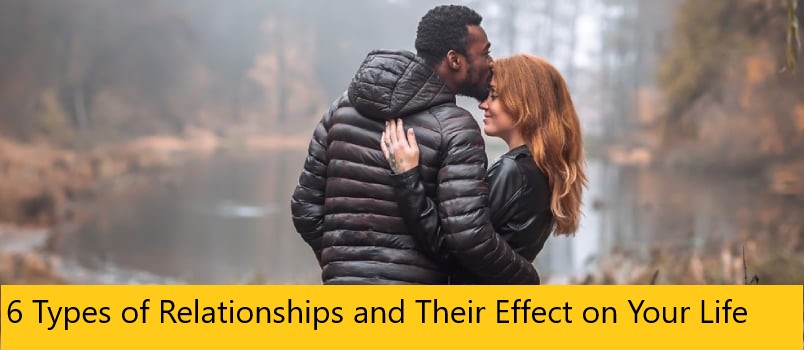Why does it matter?
Relationships are a big part of life.
Terms That Describe Intimate Relationship Types and Dynamics – Whether it’s family or friends, acquaintances or lovers, folks online or IRL, or anything and everything in between, it can be challenging to find the right words to discuss different relationship roles and dynamics.
Terms A to C
Accepting
In the context of relationships, accepting refers to the act of learning to embrace your partner(s) for who they are — including their traits, behaviors, and needs — at the present moment and as they shift over time.
The process of genuinely accepting your partner involves reflecting on your potential tendency to change, judge, or become easily irritated by aspects of who they are or how they behave.
Active/passive
Active and passive describes a power dynamic frequently observed between partners in relationships and families.
An active/passive dynamic can appear in many areas of the relationship. For example:
- household chores
- initiating foreplay or sex
- having difficult conversations
- taking on financial responsibilities
- prioritizing health and well-being
Typically, the person who takes the initiative or makes a decision in the situation is considered the active person.
The person who remains unresponsive, disengaged, apathetic, or overpowered (physically or emotionally) is the passive person.
Allosexual
This word and category describe those who experience sexual attraction.
Use of this term helps normalize the experience of being asexual and provides a more specific label to describe those who aren’t part of the asexual community.
Asexual
Asexual identity or orientation includes individuals who experience little or no sexual attraction to others of any gender.
Asexual can also refer to the spectrum of asexuality that includes a number of other sexual and romantic identities that describe those who experience little sexual attraction or none at all.
Balanced
A balanced relationship is one where there are equal and healthy amounts of giving and taking.
Considering the amount of affection, energy, love, and support you give and receive in a relationship is a good way to assess which areas feel balanced, and which areas could use more attention or intention.
What balance looks like in each relationship may be different, and is dependent upon each person involved feeling valued, respected, and getting their needs met.
Basically or close friends
These terms describe a platonic bond that most often exists between two friends that have a great deal of love, care, and nonromantic affection for one another.
These types of relationships can often resemble sexual or romantic relationships in terms of time spent, care, and commitment, but often don’t include the sexual or romantic elements.
Platonic relationships between close friends frequently involve flirtation, admiration, and commitment, but don’t indicate anything about any party’s sexual or romantic attraction or preferences.
Casual
This describes a type of relationship that is not yet defined or labeled and often requires less commitment than relationships that are formal, or not casual.
Given the somewhat vague nature of the word, it’s hard to know exactly what someone means when they describe a relationship this way.
The meaning and expectations attached to casual relationships can vary greatly from person to person.
For example, some casual relationships are sexual, while others aren’t.
It’s important to speak with friends and partners about how you define a casual relationship to ensure you’re on the same page and can respect one another’s needs and boundaries.
Changing or working hard
These terms refer to the act of putting energy into shifting aspects of the relationship or individual involved in the relationship.
This “work” is often rooted in the desire for improvement or increased happiness in the relationship.
While changing or working hard in a relationship can be a sign of commitment, it can also be a sign of incompatibility or that one person is not getting their emotional or physical needs met.
Civil union
Also known as a civil partnership, civil union refers to the legally binding union between two parties.
This type of legally recognized partnership only provides state-level legal protections and privileges.
The terms associated with civil unions vary from state to state and don’t afford people the same federal protections and benefits as marriage does.
Read More : Salvabrani.com

Codependent
This is a relationship dynamic that lacks the emotional and physical boundaries that are necessary to have a healthy and respectful relationship long-term relationship.
Though the term codependent is sometimes used to describe people or personal traits, it more accurately captures behaviors, actions, or tendencies.
Codependency can take different forms, but some signs are:
- taking on your partners’ issues
- taking care of them, sometimes at the cost of not caring for yourself
- losing touch with who you are as an independent person
- lacking your own relationships
- putting your partner’s needs before your own
Cohabitation
This refers to the act of living in the same household as someone you’re in a relationship with.
Partners can make the decision to cohabitate in any stage of a relationship, and for a variety of reasons that might be connected to:
- the stage of the relationship
- personal values
- financial benefits
- convenience
- practicality
Different people attach different values and assumptions to taking the step to cohabitate, so it’s important to speak openly about what this step means in the context of your relationship(s).
Committed
This describes a relationship that includes intention and accountability, with regard to:
- time spent
- level of prioritization
- desire to work through conflict
- openness to a future or long-term engagement
- dedication to meeting one another’s needs
Courtship
This term describes the period of time before two people formally engage in a relationship that involves a long-term commitment to a future together.
The values and intentions ascribed to a given courtship can change from person to person, culture to culture, and relationship to relationship.
Terms D to K
Dating
This is the act of participating in a shared activity with the intention of spending time with or getting to know someone.
Dating, or going on a date, is often a first step in exploring a platonic, romantic, or sexual interest or attraction to someone.
The expectations associated with dating can change from person to person and culture to culture.
Speaking about what dating means to you can help foster communication, honesty, and trust in the early stages of getting to know someone you’re platonically, romantically, or sexually interested in or attracted to.
Disconnected
In the context of a relationship, disconnected refers to distant feelings or a lack of emotional connection.
Emotional disconnection is often a result of one or more of the following:
- not getting your needs met
- looking for someone outside the relationship to meet those needs
- lack of communication
- incompatibility
Dominating
Dominating, or dominant, can be used to describe traits associated with a person or a relationship dynamic.
Often viewed in opposition to “submissive,” dominating refers to the act of asserting physical, sexual, emotional, financial, or psychological control in a relationship, situation, or particular interaction.
When a person or relationship dynamic has dominating qualities, it can cause a temporary or ongoing power imbalance in a relationship.
For some, this shift in power is a positive thing and contributes to aspects of compatibility and attraction.
For others, this shift can be experienced as threatening, disrespectful, or nonconsensual.
Discussing your observations about dominance and dominating traits in a relationship can help you and your partners approach power dynamics with honesty and intention, while also providing you with a deeper understanding of the role this power dynamic plays in your relationship.
Domestic partnership
This describes a type of relationship that involves two people who are cohabitating and in a relationship with one another but aren’t legally married.
Although domestic partnership is a legal status, it doesn’t provide the same benefits, rights, or privileges as civil unions or marriages.
Engagement
This refers to the period of time in a relationship before a formal, legal, or ceremonial commitment, but after the parties involved agree to this future commitment.
Some people associate engagement with a proposal from one person to another or giving the gift of a ring, while others may not attach a particular action, item, or tradition to entering this stage of a relationship.
Friends with benefits
This term describes a relationship that includes elements of friendship, with the addition of another relationship dynamic, often romantic or sexual attraction.
The particular benefits that come in addition to friendship is determined by each person involved and can vary from relationship to relationship.
Some people use the term to communicate their desire to keep things casual or have the opportunity to see other people.
Others use this term to indicate that they want the relationship to resemble that of a friendship but have the benefit of sex or physical intimacy.


